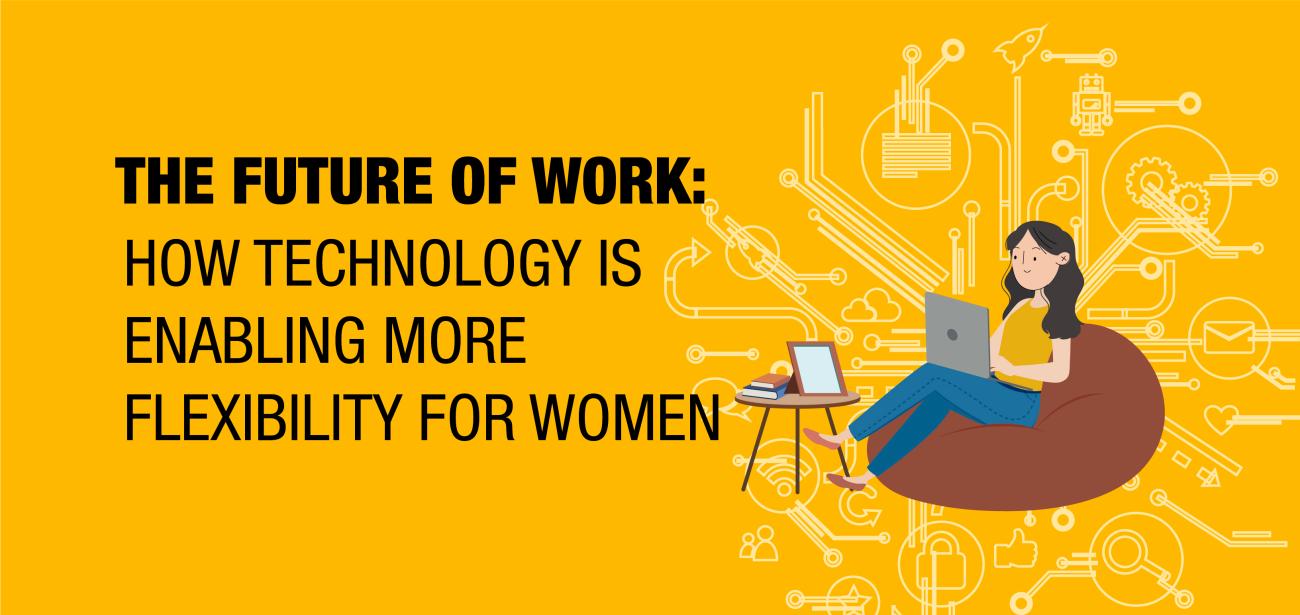The Future of Work: How Technology is Enabling More Flexibility for Women
The world of work is undergoing a profound transformation, and technology is at the forefront of this revolution. As technology continues to revolutionize industries and reshape traditional work structures, it is interesting to explore how these changes are enabling greater flexibility and equity for women in the workforce.
A recent report by Oxfam India highlights the glaring disparities in wages between men and women. On average, women earn 27% less in regular employment, 58% less as casual workers, and a staggering 141% less in self-employment in urban areas. These statistics shed light on the need to address these inequities and level the playing field.
Moreover, the declining rates of female employment in India, currently at 19.23% compared to 24.51%, raise further concerns. Despite the widening access to education for women, this progress has not translated into increased participation in the workforce.

So, what does the future hold?

How is the landscape of work changing?
Can technology empower women by providing increased flexibility, fostering work-life integration, and promoting equal opportunities?
And what does that mean for your business & company policies?
By understanding the broader implications of these advancements and the need for equality, we can uncover the potential for a future of work that is more inclusive, balanced, and supportive of women across various sectors and regions.
The Rise of Remote Work:

In recent years, there has been widespread adoption of remote work, driven by remarkable technological advancements and fuelled by the pandemic and the need for change.
While remote work holds immense value for all professionals, its impact on women in particular has been remarkable. By allowing women to effectively balance their work and personal responsibilities, remote work has opened up new avenues and shattered geographical barriers, granting them greater opportunities for career advancement while fostering a harmonious work-life integration. Tools and platforms such as video conferencing, cloud storage, project management software, and virtual communication channels have empowered individuals to seamlessly work from home, co-working spaces, or any location that suits their needs.
This newfound flexibility has been especially transformative for women, as it enables them to navigate their professional endeavours while addressing their unique familial commitments and personal aspirations. This increased access to opportunities has been particularly significant for women in towns in tiers 2 & 3 or regions where job prospects were historically limited, providing them with a platform to contribute their skills and expertise to a broader spectrum of industries.
Flexible Work Hours and Schedules:

In today's dynamic work environment, the significance of flexible work hours and schedules cannot be overstated, particularly for women who face multiple responsibilities. The advent of technology has played a pivotal role in enabling such flexibility, by providing easier ways to communicate, collaborate and deliver outcomes. Platforms that facilitate efficient project planning, track progress and ensure timely completion rates contribute to the enablement of flexible work hours and schedules.
By leveraging technology, companies and organizations can offer women the opportunity to customize their work hours, accommodating their unique caregiving responsibilities. This flexibility provides women with the freedom to allocate time for family-related duties, such as childcare, eldercare, or attending to personal commitments, without sacrificing professional growth.
The positive impact of flexible work hours extends beyond a simple adjustment in the daily timetable. It reflects a fundamental shift in the work culture, fostering an environment that values work-life integration and acknowledges the diverse needs of employees, including women. By allowing women to optimize their work hours around their personal lives, organizations promote increased job satisfaction, employee engagement, and overall well-being. This, in turn, leads to improved productivity and retention rates, benefiting both the employees and the organizations they work for.
Gig Economy and Freelancing:

The emergence of the gig economy and freelancing has ushered in a new era of work, presenting women with greater autonomy and a wide range of employment options and dismantling traditional employment barriers.
Technology-driven platforms have revolutionized the way work is sourced and conducted, allowing women to leverage their skills. In today's digital era, finding work has become significantly easier for individuals with valuable skills and a reliable internet connection. A plethora of opportunities have emerged, presenting ample possibilities for those who are motivated and proactive. With platforms such as FlexiBees, Freelancer, and Fiverr, individuals can tap into a wide range of gig work options and unleash their potential by leveraging their unique abilities.
Skill Development and Online Learning:

The realm of education and skill development has been profoundly transformed by technology, particularly through the emergence of popular online learning platforms. These platforms serve as catalysts in empowering women to enhance their skills and pursue rewarding careers. Platforms like Coursera, Udemy, Udacity, Khan Academy and LinkedIn Learning play a pivotal role in bridging the gender gap and fostering gender equality in the workforce.
The benefits of online learning extend beyond skill acquisition; they encompass building confidence and empowering women to chart their own professional paths. Armed with expertise women can position themselves as strong contenders in the job market, challenging existing gender stereotypes. The power of online learning provides flexibility to the learners and goes beyond knowledge acquisition; it fosters inclusivity, builds networks, and empowers women to pursue fulfilling careers while challenging gender norms.
Conclusion:
Technology is reshaping the future of work and empowering women with greater flexibility and equity. By embracing remote work, flexible schedules, the gig economy, and online learning, we can create a more inclusive and equitable future. It is crucial to address challenges, advocate for policy changes, and foster a culture that embraces work flexibility and equal opportunities for women from all walks of life. Together, we can shape a workforce that harnesses the potential of technology to empower women, driving progress towards gender equality.


